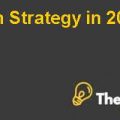Q4.) How does HMC develop its capital market assumptions? Why does HMC focus on real returns when making its forward-looking view of expected returns and risk?
While developing the capital market assumptions Harvard Management Company has taken into account the standard deviation of returns and value of asset classes, returns generated from an investment and the associated risk with the investment in each class of asset and the correlation between each class of asset, meanwhile, the HMC has attempted to manage the declines in assets by investing in the opposite correlated asset classes in order to avoid the magnitude of variances in investment portfolio.
However, in order to acquire a diverse profile of asset classes HMC has gathered the data of asset classes which is based on the real and risk adjusted measurement methods and gather this data is based on long period of historical values so that this statistically collected data can be used for additional analysis. Furthermore, the data collected on the returns as adjusted with the consumer price index figures so that the changes in the economy can be incorporated in order to arrive at the real rate of return so that the returns effectively reveals the different characteristics of the underlying asset and the use of money rate of return is avoided. In this way the asset classes would be better compared with international asset classes and would suite HMC as they invest in the global market as well.
Moreover, HMC portfolio includes investment in different international instruments which means that the data collected for statistical analysis would also include micro and macro economic factors and trends of different economies which would be based on the different assumptions and expectations on the inflation in each economy. Therefore, HMC carries out a portfolio analysis in order to efficient portfolio, i.e. an efficient frontier, where the portfolio includes such assets that carry lowest possible risk in comparison of the returns that they generate.
Q5.) What are HMC’s assumptions about the expected real return on TIPS, its volatility, and its correlation with the real return on the other asset classes? What is the correlation of TIPS with the proposed Policy Portfolio excluding TIPS?
The management of the Harvard Business Company has been closely looking into the real returns offered by the TIPS since its inception and their finding reveals that the US Treasury inflation protected securities has offered a return in the limit of 3.2% to 4.25%, which is higher than the return offered by the regular Treasury bond. Hence, since HBC invest for a longer term view so these high returns have led the Harvard Business Company to assume that the future expected real rate of return on TIPS would be 4%. In addition to this the annual volatility of TIPS is assumed to be at the standard deviation of 3%, which is quite below the standard deviation of the other classes of assets which means that the TIPS are more than the returns and the value of TIPS has low risk. Meanwhile, the correlation between TIPS and domestic bonds is at the highest level, which is 50% and all the other assets have a small correlation with the TIPS. However, the highest correlation between TIPS and domestic bonds is because they both have similar structure. However, the correlation of TIPS with proposed policy portfolio is that they have a profile of very low correlation with other asset classes; therefore the addition of TIPS into a new asset class would enhance the efficiency of the portfolio.
Q6.) What do HMC’s capital assumptions imply about the optimal allocations to TIPS and other asset classes in a mean-variance framework? Should Harvard invest its endowment in TIPS?
The mean, variance framework is used to establish the best possible allocation of resources in acquisition of different asset classes that would result in the lowest possible variance in the returns generated by these asset classes. Therefore, the Treasury inflation protected securities are believed to be such securities as they do not carry any risk and TIPS would be added into the efficient frontier line drawn with the help of simulation of portfolio performed using the mean variance framework analysis. Meanwhile the addition of TIPS into the portfolio of HMC would let HMC complete the investment line; hence HMC reached a conclusion that TIPS are most efficient portfolio investments...................................
This is just a sample partial case solution. Please place the order on the website to order your own originally done case solution.












